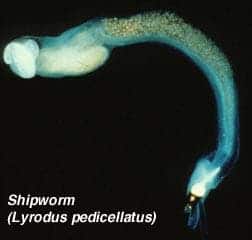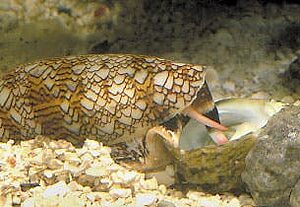The advent of antibiotics has spared humanity of a great deal of suffering and has saved countless lives through the years. Infectious diseases do not bore too easily and have always put out a fight, though. The bad news is that they’re winning and as the battle rages on, more and more strains become resistant to drugs. The consequences are broad and dire, and this is why scientists today want to be one step ahead and prepare for tomorrow.
Two separate studies recently published by a research partnership called the Philippine Mollusk Symbiont International Cooperative Biodiversity Group discuss how the future’s new class of antibiotics might reside at the bottom of the oceans. Like the name implies, both studies were concentrated on mollusks, a phylum of invertebrates which includes such animals as snails, clams and squid. Many of these ocean animals have been living in harmony with their bacterial companions for millions of years, and it’s in these bacteria that the key to the future’s antibiotics might lie. Having passed the test of time, rending no side effects to their animal companions, these bacteria have already shown promising results.
Ocean bacteria might be key to tomorrow’s antibiotics

Then comes the question, however. How do these animals feed on wood? Wood is an extremely poor nutrient, far from being an ideal meal for a multicell organism, since it lacks proteins or nitrogen. Here’s the kicker though. The shipworm has a bacteria that converts the wood into a suitable food source where the animal can both live and feed. One such bacteria apparently also secretes a powerful antibiotic, which might hold great promise for combating human diseases.
“The reason why this line of research is so critical is because antibiotic resistance is a serious threat to human health,” said Margo Haygood, Ph.D., a member of the OHSU Institute of Environmental Health and a professor of science and engineering in the OHSU School of Medicine.
“Antibiotics have helped humans battle infectious diseases for over 70 years. However, the dangerous organisms these medications were designed to protect us against have adapted due to widespread use. Without a new class of improved antibiotics, older medications are becoming less and less effective and we need to locate new antibiotics to keep these diseases at bay. Bacteria that live in harmony with animals are a promising source. “

Scientists proved that bacteria associated with cone snails actually produce a chemical which is neuroactive, impacting nerve cells (neurons) in the brain. Based on initial findings alone, the bacteria is already considered promising as a viable candidate for a highly powerful painkiller.
“Mollusks with external shells, like the cone snail, were previously overlooked in the search for new antibiotics and other medications,” said, Eric Schmidt, Ph.D., a biochemist at the university of Utah and lead author of the article.
“This discovery tells us that these animals also produce compounds worth studying. It’s hoped that these studies may also provide us with valuable knowledge that will help us combat disease.”






